| Zeitschrift Umělec 2004/4 >> Some Steps Towards the Reconstruction of Reality | Übersicht aller Ausgaben | ||||||||||||
|
|||||||||||||
Some Steps Towards the Reconstruction of RealityZeitschrift Umělec 2004/401.04.2004 Travis Jeppesen | sound art | en cs |
|||||||||||||
|
Integrated Music, Ars Morta Universum
a Metaphysics of Confrontation As artists, it is nearly impossible to decipher their intent, let alone begin to classify their activities under any established category. “Art,” “music,” “performance” all lose their implicit meanings when you begin to apply them to the artists associated with the mysterious Prague-based umbrella organization known as Ars Morta Universum. Likewise when it comes to “sound art,” as they purposefully work outside of galleries and institutional frameworks. When it comes to genre, all labels are defied. Not “industrial music,” not “dark ambient soundscapes,” not “neo-classical,” not “death industrial,” or any combination thereof. And so what are we left with, but this refutation of inherited ideals, this denial of traditionally conceptual frameworks? A chaotic enterprise based on an anarchic web of conflicting intuitional motives, with the central goal being transformation through the search for new, undiscovered dimensions through sound. “We create tactics” says Tom Saivon. “We build structures.” In a double effort to promote his own activities while forming alliances with others doing similar work, Saivon founded Ars Morta Universum ten years ago upon returning to his native Prague from the Ukraine, where he spent much of his youth pursuing dreams of the Wild Wild East. Operating as a strictly autonomous body, Ars Morta has since overseen the formation of an infrastructure for the “extreme” music underworld of the former Eastern bloc, bringing together a vast network of artists who have been working in near total isolation since the beginning of the last decade (or, in some cases, before the fall of the iron curtain.) Together with Martina Sanollová, with whom he forms 2/3 of the group Skrol, Saivon has seen Ars Morta branch out into a booking agency, bringing Western acts such as White House, Non, and Controlled Bleeding to Prague while promoting Eastern European artists abroad; a video label; and the organizers of the annual Prague Industrial Festival, which will celebrate its 10th birthday in December. The history of Ars Morta Universum intersects with that of Integrated Music, which is first and foremost a term invented by composer Vladimír Hirsch to describe the underlying purpose of his project Skrol – the creation of a new art form through the organic amalgamation of “classical” music with the post-industrial cultural space. Integrated Music now exists as a record label, releasing albums by Hirsch-related projects. Hirsch began composing music for the piano and organ while still in his teens. He soon after abandoned these classical and romantic tendencies to explore experimental rock and jazz music throughout the 1970s and 1980s, ultimately forming the post-punk/darkcore band Der Marabu, which began making appearances on Prague’s underground club scene in 1987. But it wasn’t until 1996 and the birth of Skrol that the idea of Integrated Music began to take shape, thanks to a bizarre synthesis forged by the individual protagonists’ contributions to the project. With Skrol, composer Hirsch, sound artist Saivon, and vocalist Sanollová created a harrowing synaesthetic epic soundvision as a means of transcending the captivity of the present moment. Although some traces could still be discerned, Hirsch and company were no longer making rock music, per se. Nor could it be said that they were engaged in any industrial project, as industrial music had never established itself as a formidable subculture or genre of music in this region. (Anyway, by this point in the mid-90s, “industrial music” in the western world had become something of a lucrative jokers’ industry, with pop bands such as Nine Inch Nails and Marilyn Manson having leapt on to the bandwagon.) With Skrol, Hirsch made a circular orbit back to his origins as a classical composer, his closest forbears being composers such as Stravinsky and Janacek rather than Throbbing Gristle and Einstuerzende Neubauten. At the same time, he was composing his music for synthesizers rather than “traditional” classical instruments. With the addition of Saivon’s noise interference and sampling, as well as Sanollová’s mesmerizing vocal style – fluctuating between screams of delirium and haunting soprano medleys – Skrol developed a neo-futurist sound that penetrated the depths of human experience, bringing the listener to the brink of madness and spiritual epiphany through extreme dynamics and an overall intensity. Listening to early Skrol recordings, one is sadly reminded of the excessive restraints and ultimate soullessness of much of what passes for artistic endeavor these days. Of course, the fact that so few artists are willing to pour more of themselves into their work, instead favoring a more detached posture of irony and cynicism, can be readily traced back to a natural and widespread fear of the unknown; and while this is a natural, readily identifiable flaw in the human character, we must not mistakenly identify this growing detachment as “progress.” For some artists, the Unknown is the central territory – and we must listen to them. With the advent of Skrol and the general development of the Integrated Music concept and the Ars Morta universe, a new breed of artistic genius had arrived in Bohemia – one that fearlessly walked the artificial boundaries traditionally safeguarding “art” from “real life.” Hirsch, Saivon, and Sanollová weren’t content to sit back and merely criticize the outside world from a safe distance; instead, they were intent on forging their own version of reality – one that was tainted by the potent alchemical synthesis of three feral and febrile imaginations. *** They soon discovered that they weren’t alone, and so they began to organize. They weren’t able to collaborate with other official organizations, because that type of collaboration always means compromise, which always results in failure. And while everything fails in the end anyway, it’s much better to fail on your own, so that way there are fewer circumstances to get in the way of blame. And so they found themselves organizing events alongside, say, punks. Which is not to say that they have anything in common with the punks, ideologically or aesthetically. The punks don’t like or don’t understand what they’re doing, and they perhaps understand what the punks are doing too well – especially Saivon, for whom punk was something of a gateway drug to the wider world of noise intoxication. But the punks have performance spaces, squats, ideal locales for happenings, where you don’t have to put up with any bullshit from the authorities, where you can play with fire and metal and be as loud as you need to be. The punks let them in, they didn’t hurt each other. There was some mutual understanding – a rare thing in today’s world. One of their more interesting actions took place here, in the Papirna squat in Prague. A performance, a collaboration between the Slovak noise artists Einleitungszeit and the Czech dancer Sangredans, on May 23, 2002. Captured on film, AuraNoise calls to mind the films of Kenneth Anger, and was aptly subtitled by the artists a “ritual of post-human catharsis.” In the beginning, all is dark and silent. We are in a dungeon, somewhere. Voices whisper, a distant screaming. Beneath a red light, a woman appears. Horror. Man as machine and vice versa. Amplified screams distorted through a mask. In response, the female body writhes in contorted abandon, an abandon that alternates with total restraint. The light changes from red to green. Now she’s on the floor. Fire. Flashes of light. A body, sacrificed at the altar of madness. Once more, she throws herself on the floor. Now she’s tied up, her feet caught up in something hanging from the ceiling, legs bound to her dangling demise. Sparks fly from up above, flames ejaculated from the side. Screaming shrieking fire madness. Now everything – the floor, the sound, the girl – all seem to be melting. Chains hanging from the ceiling scrape the cement floor: raw hallucinatory hypnosis. A circle of flames. The girl, still there, but transformed: her skin has changed colors – a white zombie. An illustration of technology’s impact on the human body – its cancerous molestations – genetic tampering – artificial implantations – morphological transgressions – all in the name of “progress.” *** From Skrol, a new, more abstract project emerged in the year 1999. Aghiatrias is a sort of extrapolation of the two extreme sensibilities encompassed by the two male members of Skrol – noise (Saivon) and neoclassicist tendencies (Hirsch). As a duo, they’ve taken for their motto, “Confrontation as a transsubstantial act.” The project is based on an effort at “grasping both ways in a manner which would allow them to partake of each other’s principal formal attributes, both on the basis of violent confrontation and of mutual empathy, which should lead to a unification of seemingly irreconcilable worlds,” according to Saivon. Hirsch composes; Saivon de-composes. Hirsch is engaged with imposing a (flexible) structure, Saivon’s role is to inject a sort of anti-matter into the substance – not a negation of writing, but, taken together, a sort of deconstructive approach to writing, wherein good and evil, as well as every other pair of extremes, are simultaneously asserted and denied in deference to the abyss that lies between the two poles. This is the space that the music occupies and that we, the innocent bystanders, are then forced to confront. This motif of confrontation was explored quite literally on the first Aghiatrias recording, Field Mass. Formally, the album resembles a classical opus – a mass with all the standard liturgical elements – but placed within the framework of a simple, almost operatic plot. In the first part, there is a battle, a battle that is suddenly interrupted by a scream so painful, so alarmingly piercing above the roar down below, that both sides put down their weapons and participate in a mass together on the battlefield. Eventually, the mass develops into an analysis of the fight’s true motives, to the extent of recalling the viscerality of the battle-within-the-battle with a thunderous barrage of stabbing pulses, finally resolving itself in the absolution of humility and a sign of peace. The album is a sonic metaphor, an excavation of the violence operating beneath the surface of all human interactions, serving as an illustration of nature’s wrath, which reveals itself in the self-destructive characteristics of the human species. But in the end, we are left with a message of hope and possible renewal lingering above the baseness of our earthly subsistence, effectively formulating a viable connection between Hirsch’s Catholicism and Saivon’s existentialism. The next Aghiatrias project was more formally abstract, and yet representative of another step towards integration through confrontation – tonality into atonality, noise into classical, etc. As the subject matter is quite clear from the title, Epidćmia Vanitatis tackles the epidemic of vanity that plagues the modern world. The album is not merely a reflection of this world, but shows us an image of another, possible plane of existence. Again, confrontation as a transsubstantial act, and this time, spiritual transcendence arises as a pertinent necessity as a means of overcoming the materialistic limitations that trap us into leading machinic existences. It is in this very engagement with “the other side,” for lack of a better term,” that we can readily see why the members of Skrol and Aghiatrias have no real interest in politics, as such. They are not blind to the matter, but as artists, they are split into two modes of being occurring simultaneously on two planes of existence – there is always part of them living and breathing and thinking “over there,” in an unnamed and unnamable terrain they attempt to evoke synaesthetically through their art. In addition to his career as a composer, Hirsch is also a doctor. Out of curiosity, I ask him if his daily dealings with sickness and the frailties of the human body had had any effect on his development as an artist. “It is the mistake of modern medical science to view the body strictly as a body,” he says. “As a doctor, I must see the human being in all its complexity. And I have seen some gruesome things, mangled corpses laying on the street…But what bothered me the most was not the sight of death, but the intrusive stares of the passers-by.” In addition to his work with Skrol and Aghiatrias, Hirsch is the author of a number of symphonic and organ works, many of which were premiered at the St. Wenceslas Church in Prague, and has numerous side projects, including the more rock-oriented Subpop Squeeze and the conceptual Zygote, which was initially performed in 2000 and later re-worked into an album, Geometrie nevědomí, with lyrics by Saivon sung by Sanollová. Aghiatrias’s third and most recent album, Regions of Limen, deals with the confrontation between the unconscious and consciousness, between the real world and the world that lies beyond. The album also forms an elaboration of a theme explored by Hirsch in one of his orchestral suites, De Regionibus Liminis, namely subliminal sensual perception and its fictive musical application. While Sanollová contributed vocals to Epidćmia Vanitatis, her role in the project is less defined, to the extent that she herself isn’t certain whether or not to call herself a member of Aghiatrias. But, having also contributed to Regions of Limen, she inarguably forms a significant spiritual alliance with the Aghiatrias brotherhood. While live performances normally take the form of video projections with Hirsch and Saivon, on synthesizers and laptop, respectively, donning black masks that hide all features, Sanollová recently appeared live with Aghiatrias in a performance at Rock Café, where she took the form of an androgynous angel of death, also in black mask and sheathed in red light, with a knife in hand whose blade was pointed alternately at the audience and at herself, falling back on the stage in a sort of agonized ecstasy, as though in communion with God. As with Skrol, performance strategies are always mapped out in advance, requiring weeks of preparation. “Owing to the abstraction of the music,” says Sanollová, “careful planning is required to communicate the epic story through the performance.” *** Outside of the concept of Integrated Music, “for us, in many cases the music doesn’t play the primary role,” says Saivon. “More important are the spaces the sound can open up for the listener. The enlightening of fantasy and the imagination – nutrition for the individual mind.” Ars Morta’s open stance towards experimentation within sound accounts for their long-standing relationship with regional noise terrorists VO.I.D. of Dečin and Silvia Hromadková’s S/M, as well as the fiery power electronics duo from Slovakia known as Einleitungszeit. All of these artists have featured in the past at the Prague Industrial Festival, held in a different location every year as a ceremonious celebration of experimental music and sound art, which has also featured international guests such as Delayer and Bad Sector. Ars Morta also collaborates regularly with artists from the burgeoning post-industrial/noise scene in Poland, such as Jude and Job Karma. Besides promoting the work of their own projects and others from the region, one of the main facets of Ars Morta is to serve as an archive for their concerts and actions. For this reason, they launched a video label in 1999, which has released twelve DVDs to date. Sanollová and Saivon hire teams of professional filmmakers to record the live performances. Preserved on video, the performances assume legendary status, becoming art films in their own right, as well as documented happenings. *** 2004 has turned out to be a busy year for Hirsch, Saivon, and Sanollová. In addition to the release of Regions of Limen, several live performances throughout Europe and preparations for a winter Aghiatrias Tour, not to mention the organization of the 10th Prague Industrial Festival, the trio are also expected to put an end to the rumors of Skrol’s demise with the release of the long-delayed album Dances and Marches for the Orphan Age to coincide with their headlining performance at the Festival. Then there’s the recording of the new Aghiatrias album, which will be called Ethos. Given their collective stance, and the firm sense of morality that underlies all their actions, the title is an appropriate one. To quote Saivon: “From the beginning, we’ve striven to support and promote musical projects which had only a small chance in front of the public eye because of their unconventional emotional and spiritual – yet also aggressive, violent, and confrontational – nature. For us, each spiritual product should be concerned and taken into account. Both so-called evil and so-called good. Operating between fascination and fear, we ultimately serve and fight for what we consider to be right and good.” Selected Discography Aghiatrias, Epidćmia Vanitatis (Integrated Music, 2002) Aghiatrias, Field Mass (CatchArrow, 2000) Aghiatrias, Regions of Limen (Epidemie, 2004) Der Marabu, Cruci-fiction (courtesy of Vladimír Hirsch, 1994) Einleitungszeit, Auranoise (Einleitungszeit, 2001-2) Einleitungszeit w/ Sangredans, Auranoise (Ars Morta DVD, 2002) Einleitungszeit, Doba úvodu (Einleitungszeit, 1999) Vladimír Hirsch, Concert industriel pour orgue, op. 49 (Integrated Music, 1998) Vladimír Hirsch, Symphony No. 3, op. 52 (CatchArrow, 1999) Schloss Tegal, Black Static Transmission (Cold Spring, 2003) Schloss Tegal, Live at the Arsenal (Tegal, 2002) Schloss Tegal, Neoterrik Research: The Hidden History of Schloss Tegal (Cold Spring, 2004) Schloss Tegal, Oranur III “The Third Report” (Interzone, 1994) Schloss Tegal, The Soul Extinguished (Tegal, 1997) Skrol, Heretical Antiphony (Membrum Debile, 1999) Skrol, Insomnia Dei (Membrum Debile, 2003) VO.I.D., Arde Zygote, Geometrie nevedomí (CatchArrow, 2001) Online www.arsmorta.org www.vladimirhirsch.com www.pragueindustrial.org www.schlosstegal.com www.einleitungszeit.host.sk www.industrialgallery.com
01.04.2004
Empfohlene Artikel
|
|||||||||||||
|
04.02.2020 10:17
Letošní 50. ročník Art Basel přilákal celkem 93 000 návštěvníků a sběratelů z 80 zemí světa. 290 prémiových galerií představilo umělecká díla od počátku 20. století až po současnost. Hlavní sektor přehlídky, tradičně v prvním patře výstavního prostoru, představil 232 předních galerií z celého světa nabízející umění nejvyšší kvality. Veletrh ukázal vzestupný trend prodeje prostřednictvím galerií jak soukromým sbírkám, tak i institucím. Kromě hlavního veletrhu stály za návštěvu i ty přidružené: Volta, Liste a Photo Basel, k tomu doprovodné programy a výstavy v místních institucích, které kvalitou daleko přesahují hranice města tj. Kunsthalle Basel, Kunstmuseum, Tinguely muzeum nebo Fondation Beyeler.
|







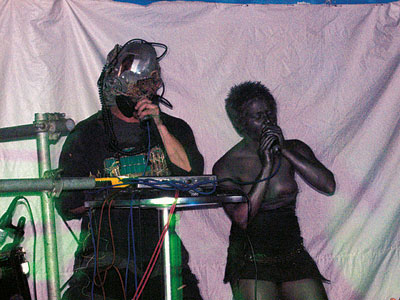
















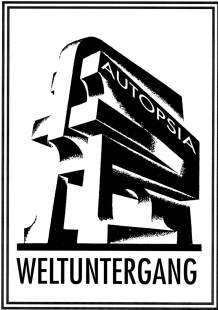




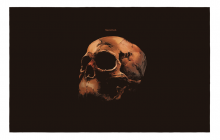
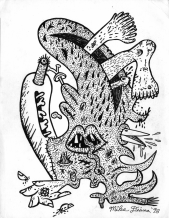
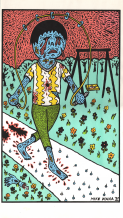
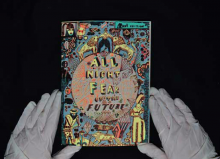


 We Are Rising National Gallery For You! Go to Kyjov by Krásná Lípa no.37.
We Are Rising National Gallery For You! Go to Kyjov by Krásná Lípa no.37.
Kommentar
Der Artikel ist bisher nicht kommentiert wordenNeuen Kommentar einfügen